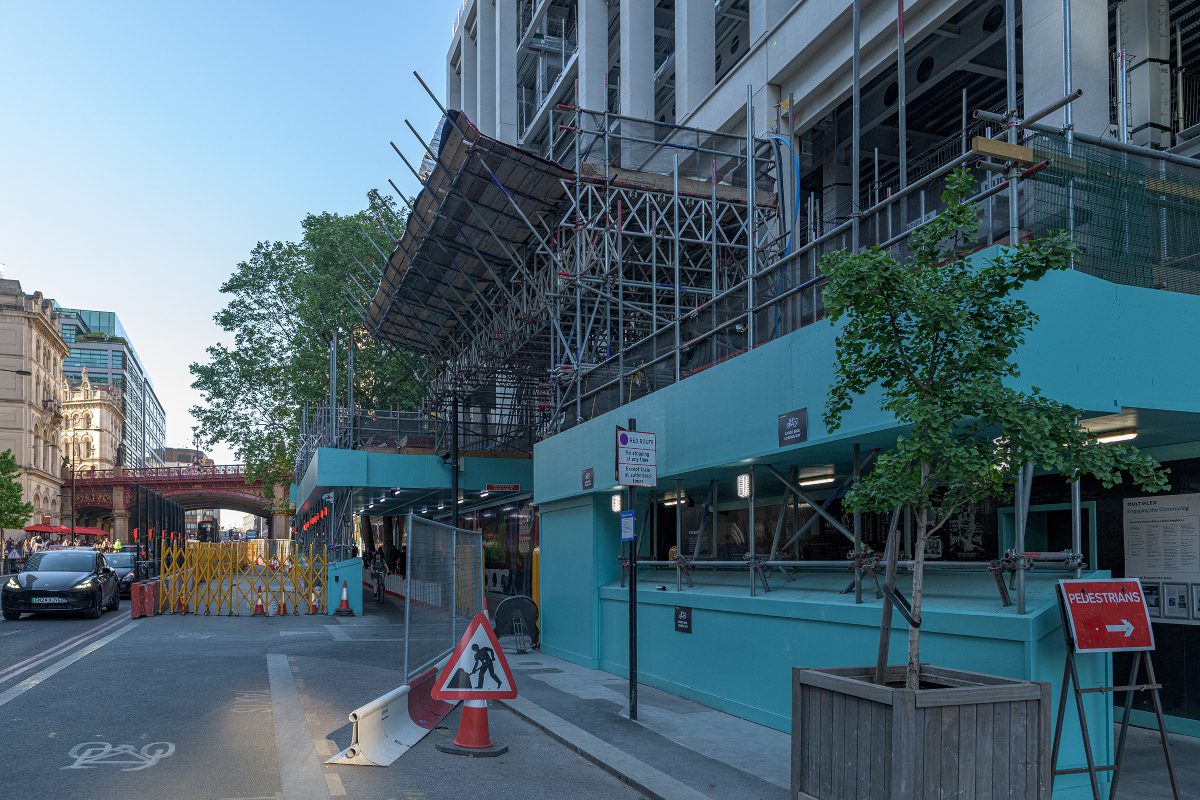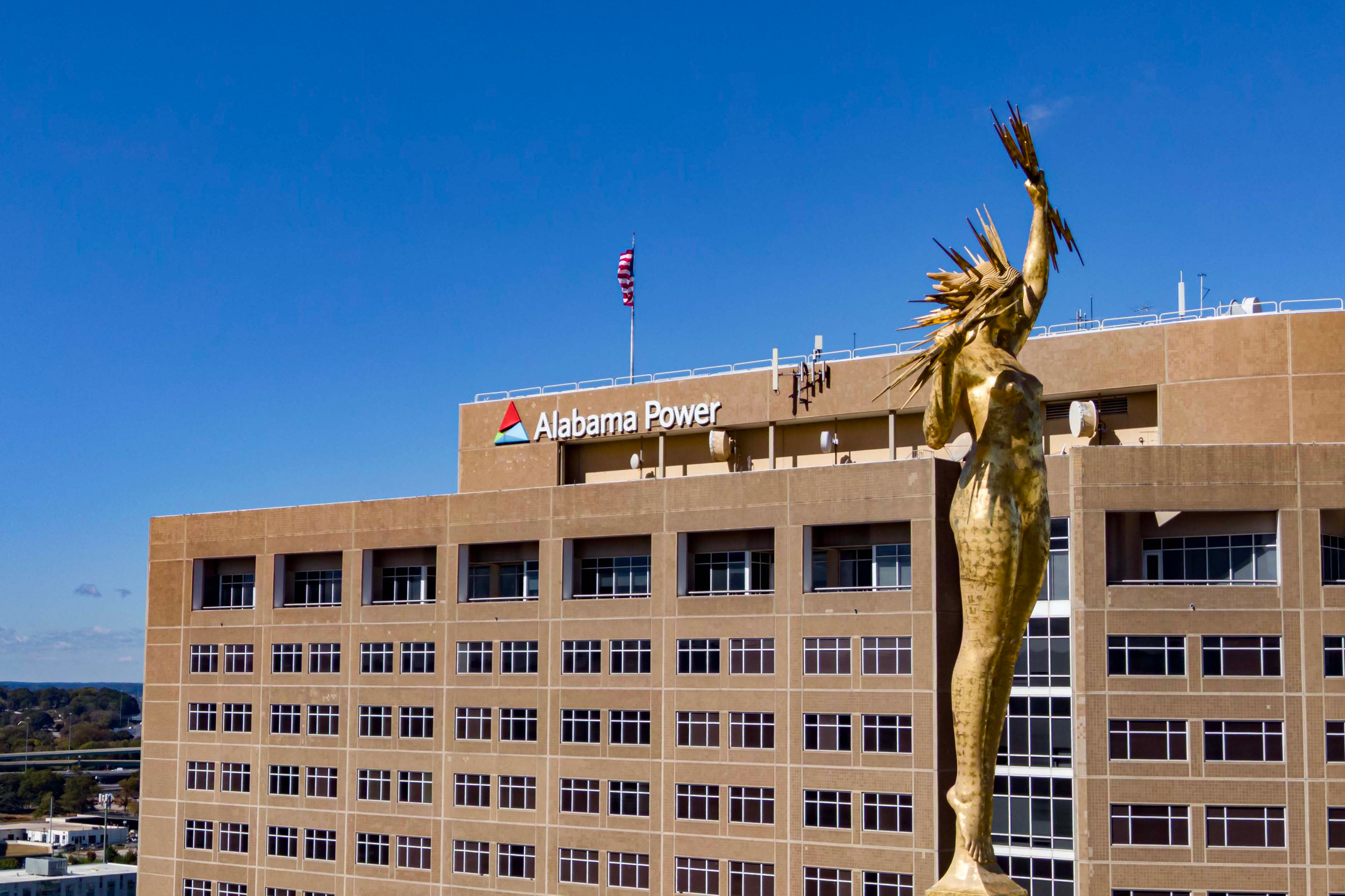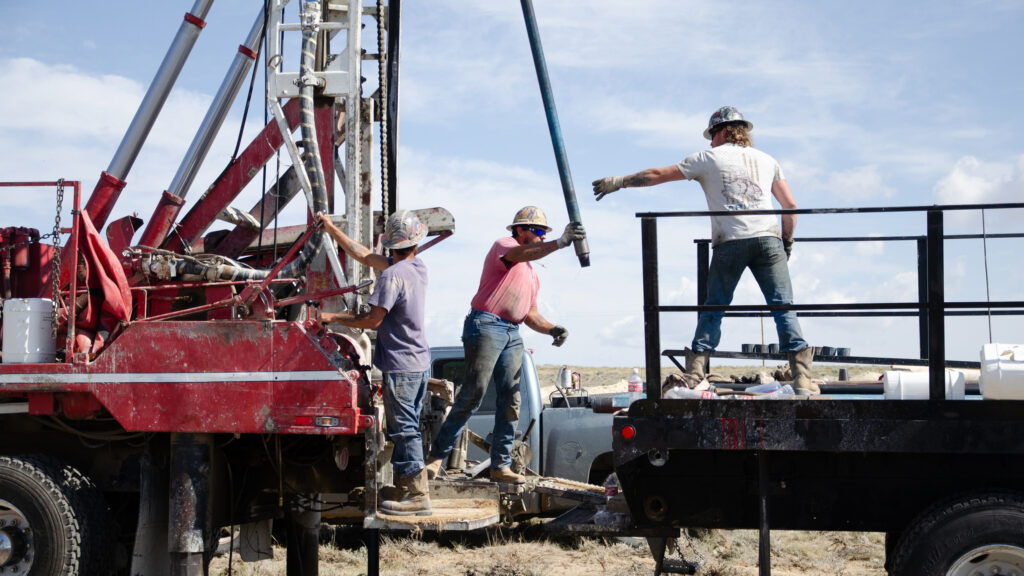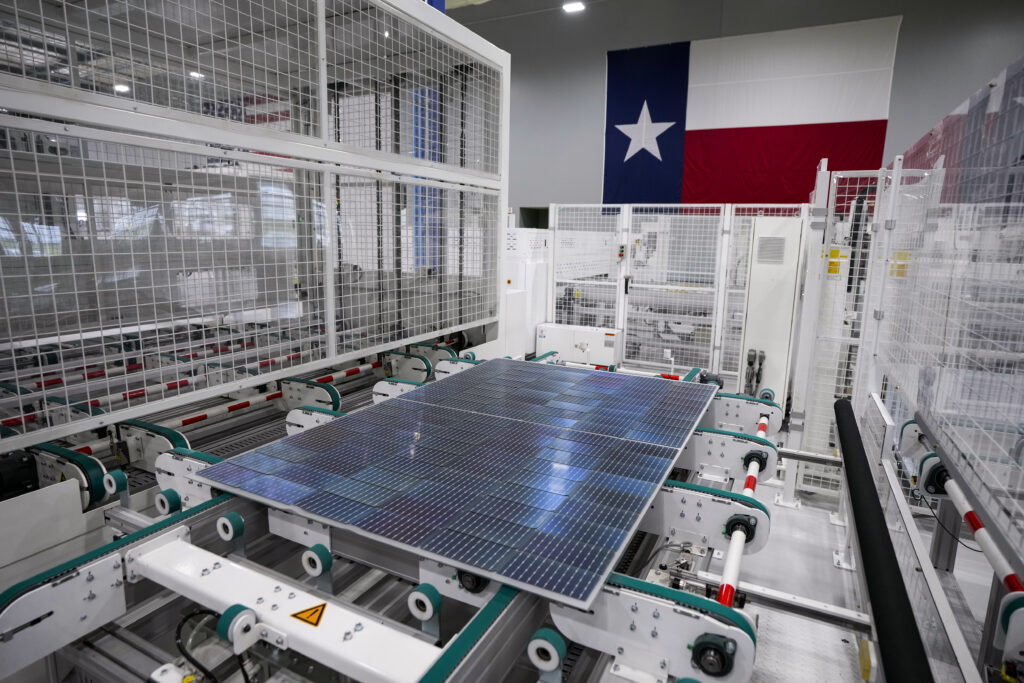Germaine Gooden-Patterson has lived in Clairton, Pennsylvania, for more than 15 years, but it wasn’t until she began a job as a community health worker in 2019 that she understood how much air pollution was affecting her neighbors’ lives—and her own.
Gooden-Patterson’s work for the Pittsburgh-based nonprofit Women for a Healthy Environment required her to visit homes in Clairton and the nearby towns of Duquesne and McKeesport, conducting surveys and interviews about air quality. As she spoke with families about air filters, lead and mold exposure, she realized that the large number of people she knew with asthma and other respiratory conditions may not be coincidental.
Clairton is home to the Clairton Coke Works, which was named the most toxic air polluter in Allegheny County in a 2021 report by PennEnvironment, an advocacy group focused on climate change issues in Pennsylvania.
We’re hiring!
Please take a look at the new openings in our newsroom.
See jobs
The Coke Works is one of the world’s largest producers of coke, a coal derivative used to forge steel. Manufacturing coke leads to the emission of a raft of chemicals, including benzene, mercury, lead, toluene, styrene, sulfur dioxide and hydrogen sulfide, a colorless, flammable gas with a pungent, rotten odor.
Around the time she moved to Clairton and gave birth to her third child, she said, she started to experience heart palpitations. Before, she attributed this symptom to being an older mom. “But once I started to learn about the effects that air pollution has on the cardio system, I put two and two together,” said Gooden-Patterson, 60.

Gooden-Patterson had commuted out of town for her previous job, but now she was spending much more of her time in Clairton, and she began to notice symptoms that she hadn’t before. During the COVID-19 pandemic, about a year into the job, she was diagnosed with environmental allergies. She said that smells from the Coke Works sometimes wake her up in the middle of the night, and the odors come with throat irritation, inflammation in her eyes and a burning in her nose.
“I can feel it on bad days,” she said, even though she has installed air filters in her home. “And I know that it’s connected.”
While lower pollution levels in communities across the nation have largely been attributed to the successful enforcement of the Clean Air Act, passed in 1970, researchers have found that some of the most persistently harmful air in America is present in communities that are predominantly made up of people of color or those with low incomes.
In Clairton, which is about 15 miles south of Pittsburgh on the Monongahela River, 40 percent of the population is African American and 23 percent live below the poverty line. The Coke Works, PennEnvironment found, was “in violation of the Clean Air Act in every quarter of the three years ending in March 2023” and has been fined more than $10 million since 2018. While Allegheny County’s overall air quality has improved since the days of killer smog and afternoon skies blackened with soot, in places like Clairton, progress still feels a long way off.
After analyzing 40 years of data about changes in pollution in emissions, scientists at Columbia University found that “racial/ethnic and socioeconomic inequities in air pollution exposure persist across the US despite the nationwide downward trend in air pollution indicating inequities in air pollution emissions reductions.”


The findings, published in a peer-reviewed study in the journal Nature Communications, examined emissions data from 1970 to 2010 involving six major sources of air pollution, including the manufacturing industry, energy producers, farming and agriculture, and transportation. Commercial, and residential sources of pollution were also considered.
“We wanted to answer the question of whether decreases in emissions have been equitable across demographic groups,” said Yanelli Núñez, an environmental health scientist at Columbia University’s Mailman School of Public Health, who was the lead author of the study. “We found that the changes in emissions were influenced by a county’s socio-economic characteristics. We found racial, ethnic and economic disparities in the decreases of air pollution emissions.”
One of the researchers’ major findings, Núñez said, concerned the role of income as a factor in lower emissions. For example, she said, counties where the median income level increased from the national average of $49,000 to $100,000 saw a 100 percentage point decrease in the emissions of sulfur dioxide, which are given off when fuels containing sulfur are burned. The median household income in Clairton between 2018 and 2021 was $41,301.
“We found that the median household income plays a major role in the decrease of emissions for all pollution sectors, except agriculture,” said Núñez, who is also a scientist at PSE Healthy Energy, a nonprofit research institute. “The higher that income the larger the decrease in emissions.”
The study also noted differences in emissions as the racial and demographic make-up of various communities changed. An increase in the percentage of American Indian, Asian or Hispanic population in American communities typically resulted in an increase in the emission of NOx, or nitrogen oxides, which are commonly produced by vehicles and power plants.
“When I can really smell it, I know it’s really bad.”
“For instance,” the researchers wrote, “an increase in the Hispanic population percentage from the national average of 4.4% to 75% resulted in a 50 [percentage point] increase in the relative change of energy NOx emissions; and a decrease in county White percentage from the national average of 87% to 25% led to 12.5 [percentage point] increase in the relative emissions change.”
Núñez said that she and her colleagues hope their research illustrates the importance of ensuring that policies like the Clean Air Act are implemented evenly across racial and socio-economic lines.
She added: “The results show that policies, although they benefit everyone, don’t necessarily benefit everyone equitably.”
One of Gooden-Patterson’s neighbors, Art Thomas, doesn’t need to be reminded of the importance of equity. Thomas, 79, has lived in Clairton for his entire life, and worked for U.S. Steel for decades.
Thomas said that many Clairton residents have gotten used to the smells from the plant after years of breathing polluted air. “You see the commercial on TV where a woman walks into her son’s room and it stinks, and he can’t smell nothing,” he said. “I think a lot of people in Clairton are nose blind.”
“When I can really smell it, I know it’s really bad,” he said. “There’s a movie called “The Deer Hunter” that was made in Duquesne and Clairton. And in that movie, they call Clairton, ‘the armpit of the universe.’ And that’s how I feel.”
Six years ago, when a fire broke out at the Coke Works, shutting down the plant’s pollution controls for months and leading to spiking emissions of chemicals like sulfur dioxide, Thomas said he didn’t find out about it until three weeks later, when he happened to see a news report on television.
“You realize you’re having trouble breathing, sleeping,” he said in a recent phone interview. “Here I am, living in the middle of what might as well be called a war zone, and I can’t find out that my life is in danger, my wife’s life is in danger from breathing this stuff, until three weeks after breathing it. It’s ridiculous.”


U.S. Steel recently reached a $42 million settlement with Allegheny County, PennEnvironment and the Clean Air Council after a lawsuit was filed under the Clean Air Act following the 2018 fire. As part of the agreement, U.S. Steel must pay a $5 million penalty, which PennEnvironment called “by far the largest in a Clean Air Act citizen enforcement suit in Pennsylvania history” and one of the largest nationally as well. A 2021 study found that asthma symptoms were exacerbated for people living near the Coke Works in the weeks after the fire, and another study found that for Clairton residents, emergency and outpatient visits for asthma doubled after the fire.
In a previous statement to Inside Climate News about the Coke Works, U.S. Steel said that the company has “a compliance rate over 99 percent and attainment with all National Ambient Air Quality Standards.”
“More than 3,000 Mon Valley Works employees strive each day to ensure their role in the steelmaking process is done in the safest and most environmentally responsible manner,” a spokesperson said.
Thomas, whose wife has been diagnosed with sarcoidosis—a disease marked by enlarged lymph nodes and lumps of inflammatory cells throughout the body, most often in the lungs—sees a relationship between his wife’s illness and the Coke Works as well as elevated rates of cancer and respiratory diseases that he’s observed in his hometown.
“When I go to a class reunion, there will be more people there from out of town, out of state, than there are from Clairton,” he said. That’s in part because so many of his peers who stayed in town have died, he said. The estimated lifetime cancer risk for Clairton residents is 2.3 times the EPA’s acceptable limit, according to the investigative news site ProPublica, which attributes that excess risk primarily to industrial emissions from the Coke Works.
Many of the stores in downtown Clairton have gone out of business. Credit: Scott Goldsmith/Inside Climate News
“We’re in the top 1 percent for cancer in the United States. Our children have three times as much asthma as other people do in the United States. There’s a reason for it,” said Thomas, who is African American. “I think somebody needs to face up to the reason and get Clairton Coke Works and the rest of these industrial plants to live up to what they’re supposed to be doing.”
Public health studies on Clairton and the effects of exposure to pollution from coke manufacturing bear out Thomas’ experiences.
When the Shenango Coke Works, about 20 miles north of Clairton, closed in 2016, research showed an almost immediate decrease in emergency room visits and hospitalizations for cardiovascular problems. Comparing Clairton to the communities near the Shenango plant, the North Boroughs, from 2015 to 2016, shows that Clairton’s emergency room visits for respiratory and cardiovascular problems increased while the North Boroughs’ numbers declined by hundreds of visits.
Advocates say the impact on children in Clairton is especially dire. “We know that children in particular are vulnerable and susceptible to the impacts of pollution in the air,” said Aimee VanCleave, director of advocacy for the American Lung Association in Pennsylvania. The ALA recently released a new report showing that the transition to electric vehicles and a renewable-powered electric grid would prevent 148,000 pediatric asthma attacks in Pennsylvania alone. “[Children] are at a greater risk anytime that air quality dips, just because they’re breathing in at a faster rate than adults are.”
And children are also experiencing greater harms from climate change, said Laura Kate Bender, a national vice president at the lung association who focuses on healthy air.
“Kids are not only more vulnerable to the impacts of air pollution from vehicles, but also to the impacts of climate change,” she said. “I think over the past year basically everyone we know has had a personal experience with the climate impact, whether it was wildfire smoke or an extreme storm or a heat wave. We know that’s especially harmful for kids.”
A study led by Deborah Gentile, the medical director of Community Partners in Asthma Care, based in Southwestern Pennsylvania, found that nearly 24 percent of children living near the Coke Works had been diagnosed with asthma. Another 12 to 15 percent likely had asthma but hadn’t been officially diagnosed, Gentile said. Those rates are significantly higher than the rates of children’s asthma for Pennsylvania and for the U.S. as a whole.
The study looked at stress levels and controlled for other factors like socioeconomic status and secondhand smoke. But that’s not what appeared to be behind the increased numbers. “What was driving it was their exposure to pollution, how close they live to the plant and whether they were in the wind direction of the plant,” Gentile said.
There is evidence that air pollution not only exacerbates asthma in people who are already afflicted with the condition; it can also cause asthma to develop in the first place.
“These particles are real small, and when you inhale, they go deep into your lungs,” Gentile said, causing inflammation and swelling and leading to permanent damage in some people. For children exposed to air pollution, this reaction, when it occurs, can have lifelong consequences. “In a child, their lungs are still developing. If they are exposed to something that causes inflammation, and they have scarring, that’s never going to be reversed,” Gentile said. “They are not going to achieve their full expected lung function.”
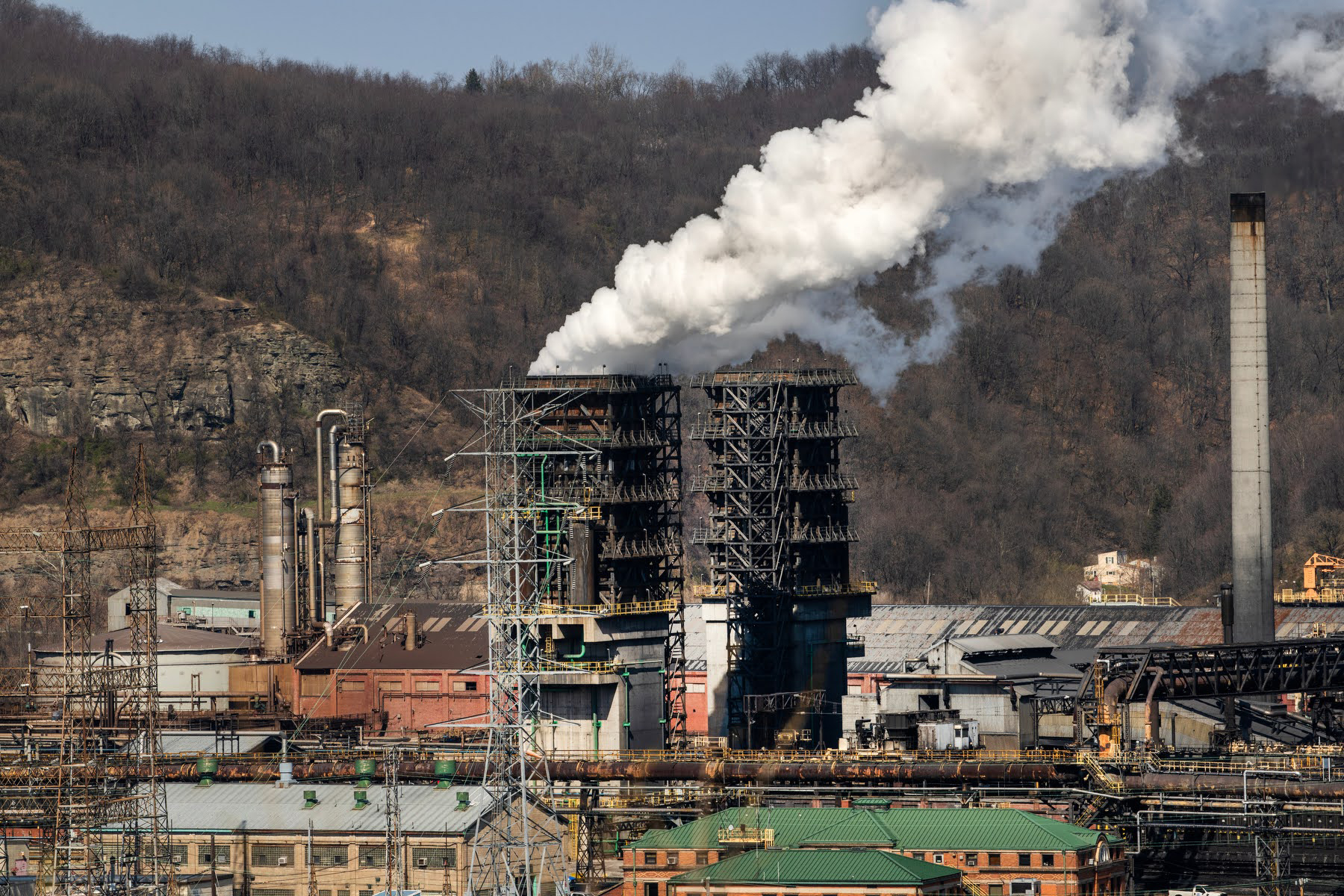

For families dealing with pediatric asthma, like Germaine Gooden-Patterson’s clients in Clairton, the ramifications can be compounding, Gentile said.
“The kids are missing school, the parents are missing work,” she said. “Parents run out of leave, and kids fall behind in school.” Asthma worsens at night, so children’s sleep also suffers. If their symptoms are not well-controlled, children with asthma often don’t participate in sports or get enough exercise, which puts them at risk for obesity and diabetes. When bad air days happen, children can’t play outside because exercising in an environment with poor air quality is especially dangerous for them, Gentile said.
Gentile was encouraged by the EPA’s recent announcement that they would reduce the annual standard for PM 2.5 (tiny, inhalable airborne particles about one-thirtieth of the width of a human hair) from 12 micrograms per cubic meter down to 9 to 10. But she said it wasn’t enough, noting that the World Health Organization’s air quality guidelines set a recommended level of 5. From 2018 to 2021, Allegheny County met the EPA’s current standards for annual particle pollution with an average concentration of 11.2, but that level won’t meet the new standards. Clairton’s 2021 average for annual PM 2.5 pollution was 9.2, according to the Allegheny County Health Department.
Research has shown that there is no safe level of PM 2.5.
“That’s a great move in the right direction,” Gentile said of the new soot standard. “We’re still not there. We really have to be stricter with enforcing regulation. We have to do a better job at alerting residents.” The 2018 fire is one dramatic example of this failure; Gentile said Thomas’ complaint about the lack of communication after that event is widespread.
Gooden-Patterson wants the plant to halt production on days when an inversion occurs, trapping pollution closer to the ground. Even when residents are warned about the air quality, they don’t always have the option to stay inside. “Some of us have to go outside. We have to work. Children have to go to school,” she said. Clairton Elementary School is less than a mile from the Coke Works.
A recent Harvard University study found that children who were exposed to air pollution during the first three years of life had an increased risk of developing asthma. The researchers believe that being exposed to PM 2.5 or NO2 during their early years may play a role, according to the study that was published on Feb. 28 in the peer-reviewed journal JAMA Network Open.
“For NO2 we found a 25 percent increase in asthma by age four and a 22 percent increase in asthma by age 11, and for PM 2.5, it was like 30 percent in asthma by age four and around 23 percent in asthma by age 11,” said Antonella Zanobetti, a principal research scientist at Harvard’s T.H. Chan School of Public Health. “These are high percentages. These were really surprising.”
Zanobetti said she and her fellow researchers found that Black children were at higher risk of developing asthma than white children. And they also examined neighborhood characteristics and found that children living in more densely populated areas with less resources were also at higher risk.
This story is funded by readers like you.
Our nonprofit newsroom provides award-winning climate coverage free of charge and advertising. We rely on donations from readers like you to keep going. Please donate now to support our work.
Donate Now
“Clinicians need to look out for these children and try to understand and to help them and realize that if they live in certain areas of the city, they might have a risk,” she said.
“You cannot just say, ‘oh, look, you need to move out of the area,’” Zanobetti added. “But it is important that families understand that air pollution is not good for you. And there are other risk factors that are worsening the risk. And so just the warning of the risk may be a step towards risk reduction.”
Gentile agreed. “These communities are just devastated. They’re falling apart,” she said.“They can’t afford to move because their house isn’t worth anything anymore because of the proximity to the sources of pollution. They’re really just stuck there.”
The impact of air pollution is not confined by city limits, Gooden-Patterson said, even if residents could afford to move elsewhere. “It’s not just this community that has been affected,” she said, though Clairton and its neighbors have shouldered a disproportionate burden. “It’s affecting you, too.”
Despite gains in the region over the past forty years, in the American Lung Association’s 2023 State of the Air report, Allegheny County as a whole still received an F for 24-hour particle pollution and a C for ozone days.
“We all have a right to breathe clean air,” she said. “It’s our God-given right.”













